You are using an out of date browser. It may not display this or other websites correctly.
You should upgrade or use an alternative browser.
You should upgrade or use an alternative browser.
Graphical effects that should be standard by now but aren't
- Thread starter L. Scofield
- Start date
L. Scofield
Veteran
Interactive physics, most modern games abandoned rag dolls for downed enemies, secondary objects in the scenes are no longer affected by collision from the player or gun fires and explosions. The player now influences very few objects compared to the past massively interactive games like (Max Payne 2, Half Life 2, Far Cry, Crysis, Oblivion .. etc).
I also second muzzle flash shadows, I add to them explosion shadows.
(2m28s)
DavidGraham
Veteran
I forgot to add particle shadows, like smoke shadows, I was pleased to find out that GTA 5 implemented those on the PS4 and XO. COD AW did the same too. One thing I would like to see is water shadows (like fountain shadows or huge waves/splashes shadows), no body seems to care to add them.
I guess it's a good thing that particles in modern games are properly shadowed and lit, though only some of them ever cast light or shadows.
I guess it's a good thing that particles in modern games are properly shadowed and lit, though only some of them ever cast light or shadows.
L. Scofield
Veteran
You mean this?
A proper HDR monitor in dark room would be the 'proper' way to handle these things, but might actually harm viewer so I'm not sure if it would be the right way forward.It's actually a rather clumsy system. If displays were HD, we'd have all visual artefacts apply naturally from our own eyes. The problem here is displays not working like real life.
Perhaps a careful scene design with tasteful glare coupled with a slow, eye like tonemapping would be the solution for games going for the 'realistic' look.
One would need to be very careful when implementing those effects.
Don't see why an HDR TV would harm viewers as long as it stays under real-life brightness values. And with a brightness control, you could keep it comfortable while still providing true brightness. Illumination is relative - the bright sports just need to be 100x times (or whatever) brighter than the general brightness.
What amount of HDR would be enough to emulate real life range?A proper HDR monitor in dark room would be the 'proper' way to handle these things, but might actually harm viewer so I'm not sure if it would be the right way forward.
Perhaps a careful scene design with tasteful glare coupled with a slow, eye like tonemapping would be the solution for games going for the 'realistic' look.
One would need to be very careful when implementing those effects.
These couple of videos from a user called Willms, show some very neat bloom and glare effects made with UE4. :smile2: The first one is based on Mass Effect (Great music, btw, but not ME related, it sounds....familiar :smile2: ), second one is based on the remake of Grim Fandango and it looks better than the actual remake, actually --love how the lens flare effect changes depending on the camera angle.
The video codec adds some extra bloom, but still..
HDR does seem to be coming, at CES this year we saw the UHD Alliance be announced and HDR seems part of the new spec, plenty of TVs set to release this year claimed to offer HDR,
Dolby have their own technology / standard and they seem to be saying 40 times the current max brightness is the target level. This is 100nits for a current reference display and 4000 for the HDR display. I think the highest from CES was closer to 2000 and the OLED was less but exact specs are non important.
There is a video showing this, obviously its low quality and the camera capturing it is not HDR nor the delivery mechanism to us but it certainly shows how things could seem totally different with this technology.
Dolby have their own technology / standard and they seem to be saying 40 times the current max brightness is the target level. This is 100nits for a current reference display and 4000 for the HDR display. I think the highest from CES was closer to 2000 and the OLED was less but exact specs are non important.
There is a video showing this, obviously its low quality and the camera capturing it is not HDR nor the delivery mechanism to us but it certainly shows how things could seem totally different with this technology.
If that's the case don't we already have thatthe bright sports just need to be 100x times (or whatever) brighter than the general brightness
philps monitor spec
Contrast Ratio 1000:1 / 20000000:1 (dynamic)
for example
Last edited:
Would GI be considered a graphical effect that should be standard ? If so do we know enough now to bet on a particular way of doing it in the future. Should we optimize the hardware to make this a solved problem ?? Is it voxel cones all the way down ???
I mean 100x brighter than 'normal' (I suppose the exposure point of the scene). A contrast ratio of 1000x on a display means that the brightest it can produce is 1000x brighter than 'black'. You need ordinary brightness to be 1000x the black brightness, and then the bright areas to be 100x that. Or whatever the real values are. As an example, a candle flame is not at all bright but it has significant glare when viewed directly in the dark. Your eye exposes for general brightness and it's overbright areas exceeding this exposure point that produce the artefacts.If that's the case don't we already have that
philps monitor spec
Contrast Ratio 1000:1 / 20000000:1 (dynamic)
for example
You boys do know that contrast ratios, especially those silly dynamic "millions to one" ratios are just there to attract the big-number tv-buying cattle, right?
L. Scofield
Veteran
GI still has a long way to go before it becomes standard.Would GI be considered a graphical effect that should be standard ? If so do we know enough now to bet on a particular way of doing it in the future. Should we optimize the hardware to make this a solved problem ?? Is it voxel cones all the way down ???
This is something that @Shifty Geezer has proposed all along, I think, just not necessarily using VR technology and I think that a TV like the one shown in @turkey 's post might do the trick --the fact that they show it on a 32" monitor hints at the fact that the technology is in its infancy. Of course achieving VR immersiveness making you feel physically there can't be matched by current TV's tech (as in this recent experiment, NSFW)..
..but as it has been already said in this thread, as long as technology gets to the point where TVs can match real life range and make the lighting feel real, your mind could do the rest. But I think very very high resolutions will be a need for that to work well, so maybe in a few decades.. I hope to be alive to see it tho
Willms, the guy who created the video featuring Grim Fandango -which looks better than the Grim Fandango Remake, btw- has shared some pictures from the original assets of his video and you can see the SUBTETLY -that word which @London-boy is madly in love with-  of the bloom and glare effects. Due to the video compression method used on Vimeo they were too enhanced, but they look actually good when you have the original material.
of the bloom and glare effects. Due to the video compression method used on Vimeo they were too enhanced, but they look actually good when you have the original material.
Green Fandango on UE4 by Willms --looks much better than both the original game and the remake version- :smile2:
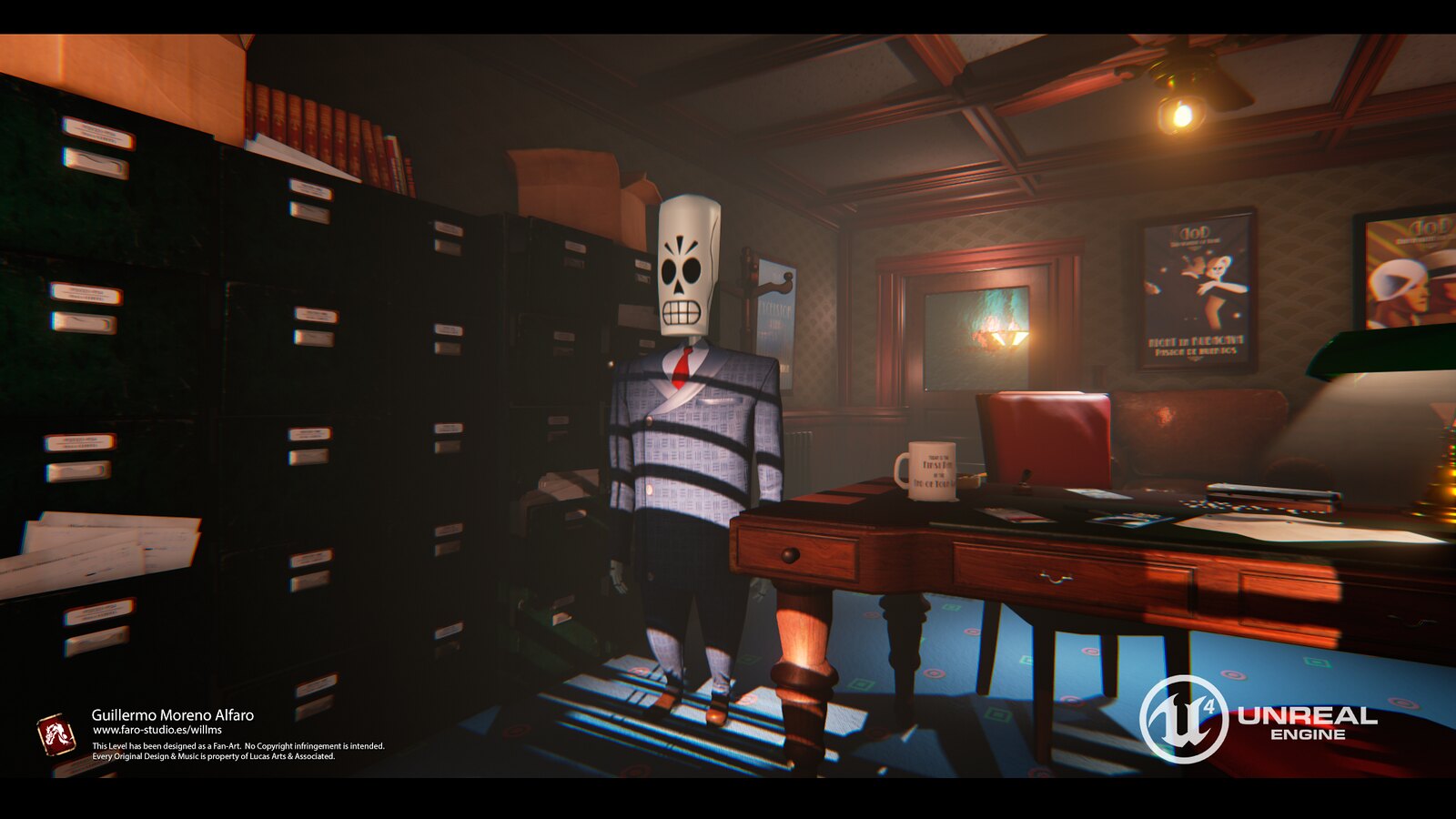
Grim Fandango Remake

And some pictures from the original assets used in the Grim Fandango video published by the author, so there aren't compression artefacts "enhancing" the bloom and glare effects:
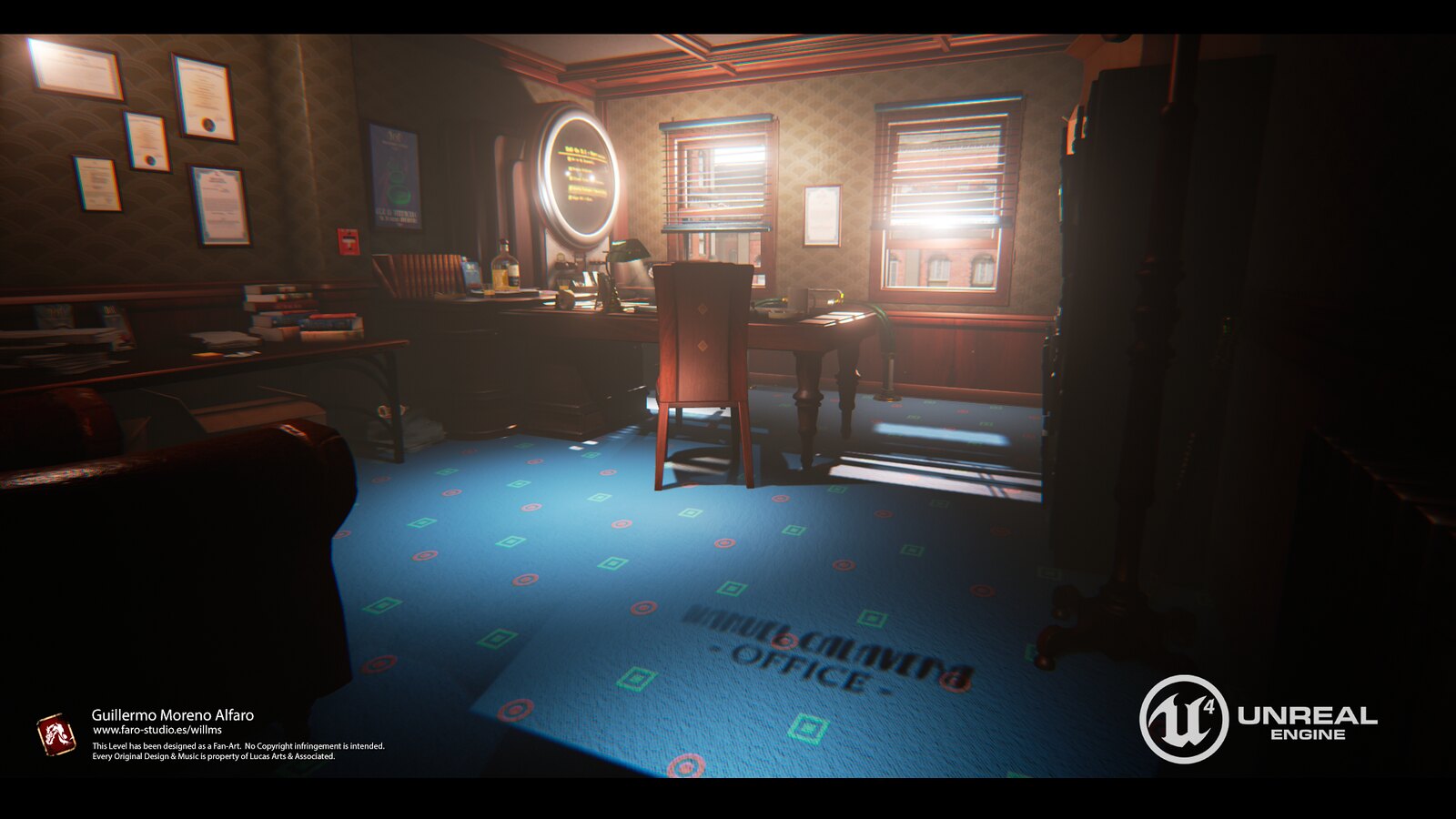
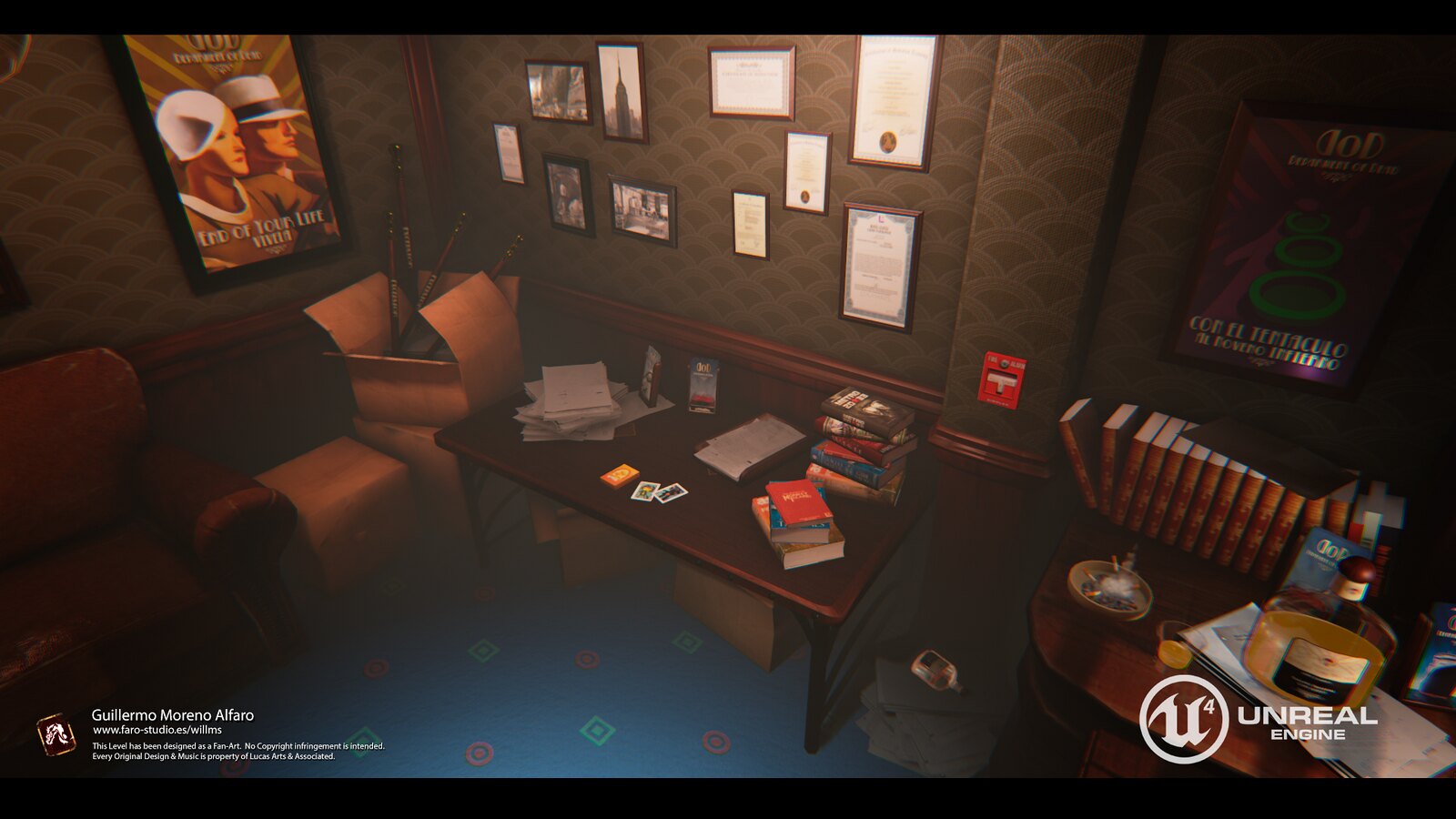
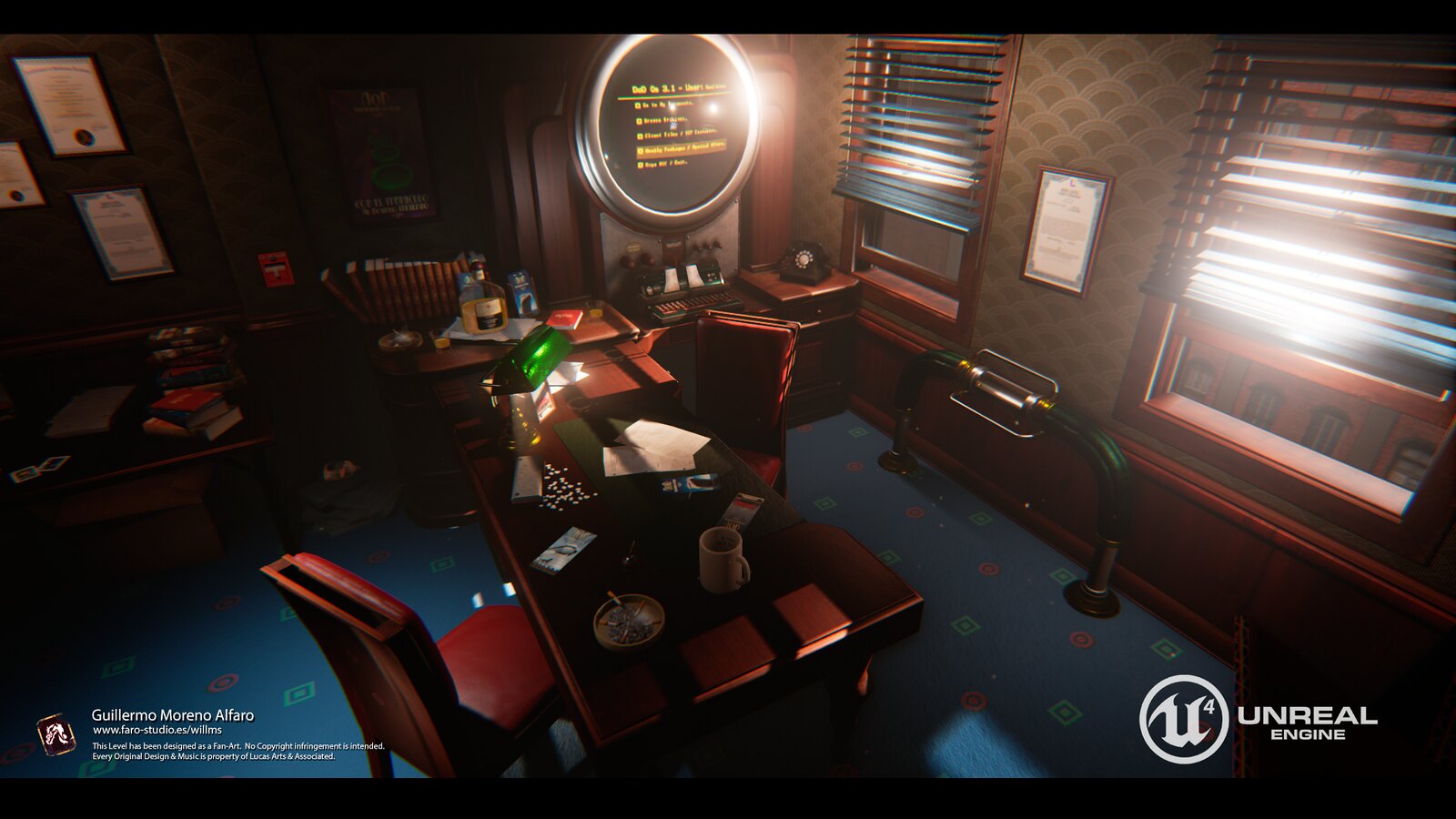
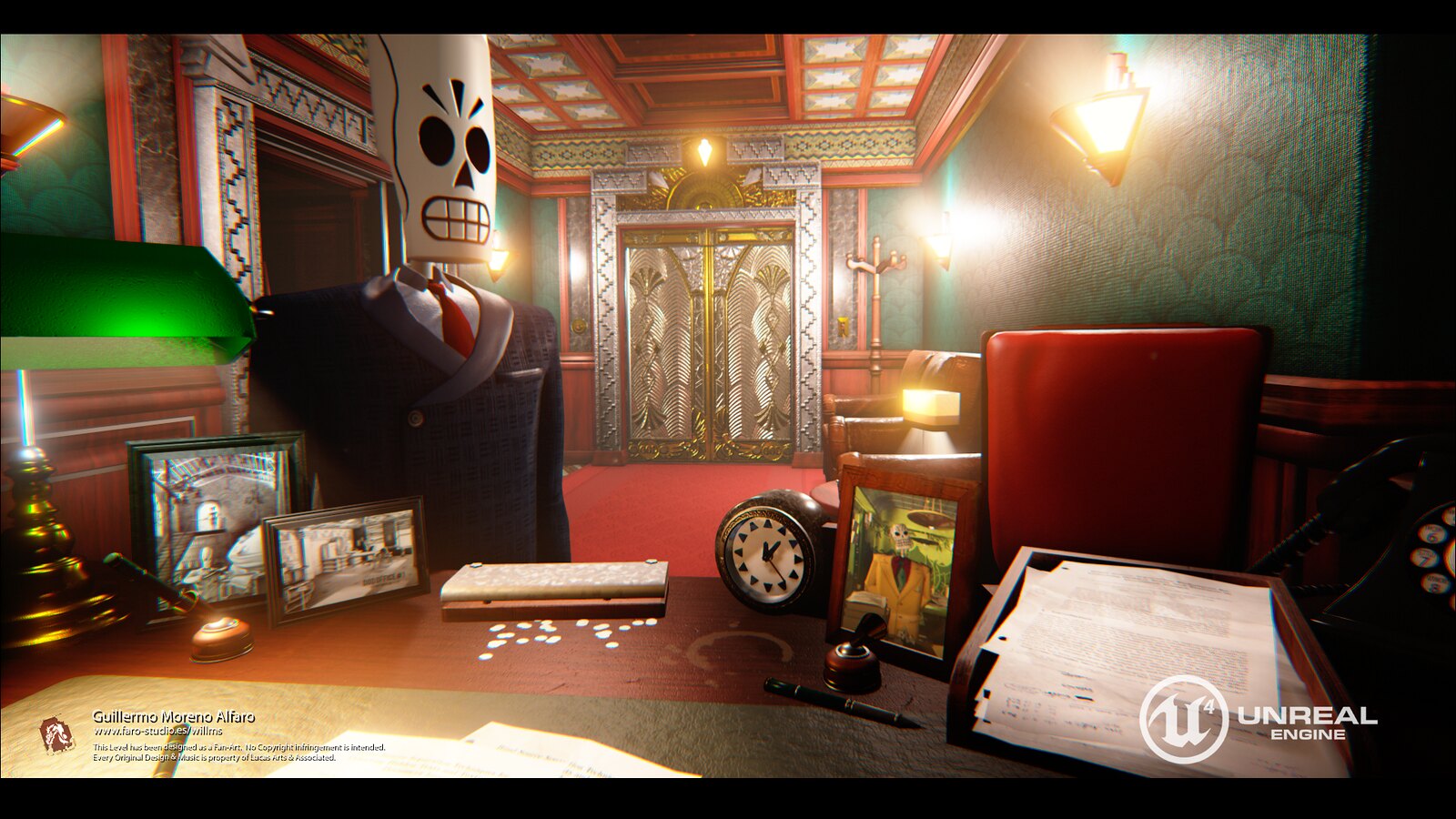


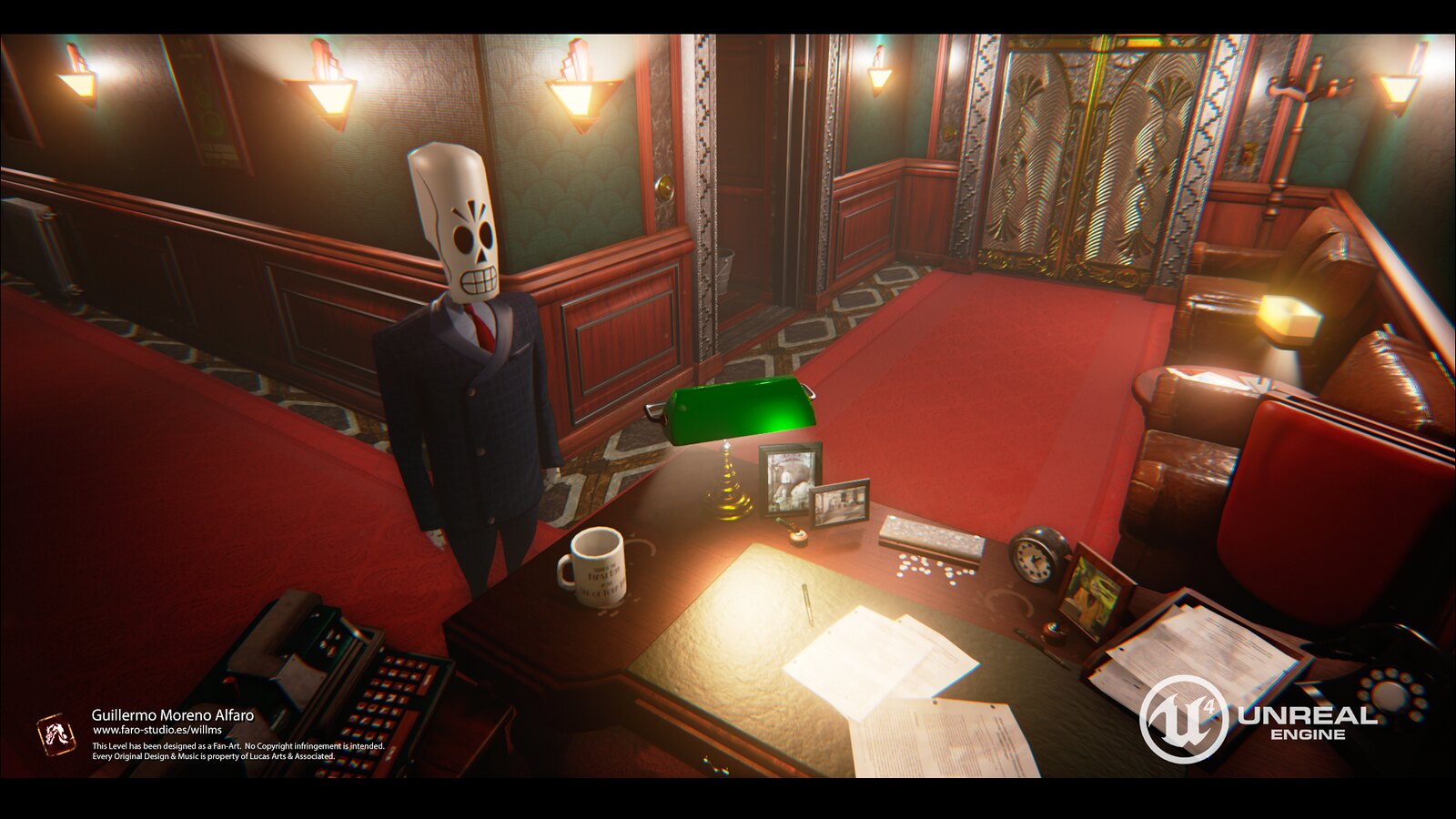
Green Fandango on UE4 by Willms --looks much better than both the original game and the remake version- :smile2:

Grim Fandango Remake

And some pictures from the original assets used in the Grim Fandango video published by the author, so there aren't compression artefacts "enhancing" the bloom and glare effects:







DavidGraham
Veteran
Yeah, only few games ever did that effect successfully, BF3, BF4, COD:AW, AC4, and GTA 5. UE4 engine seems to support the feature properly, I just wish games based on it will utilize it.You mean this?
Well, there are many explosions that would still produce shadows, fireworks for example, incendiary grenades explosions, electrical sparks, magical spells, etc. I assume flash bangs would qualify as well. So the window is wide open here.Which is similarly ironic because real explosions have very little by way of light. The power is focussed into the detonation and expanding gases, not pretty fireballs like Hollywood's gasoline-fuelled, remarkably non-destructive effects.
Technically, the explosions tend not to produce the light. The explosion is used to throw out incendiary materials. Which is being unnecessarily pedantic! Like the fake muzzle-flashes though, if you're going to have fireball explosions, they should have an accompanying shadow (except, where mentioned earlier, if they are so large that the shadow would be too soft to notice).
I see Killzone Shadowfall is including all these HDR, godrays, lens flare and muzzle flash shadow, it's literally a checklist king.
Realistic hair however is desperately in need of attention, TressFX looked good but I got a feeling it's not very well optimized for performance yet. FFXV's hair especially that girl's looked amazing and I hope it would start a trend for current gen. I was hoping with the asynchronized computing of these consoles maybe devs can use them to do hair physics calculation.
Realistic hair however is desperately in need of attention, TressFX looked good but I got a feeling it's not very well optimized for performance yet. FFXV's hair especially that girl's looked amazing and I hope it would start a trend for current gen. I was hoping with the asynchronized computing of these consoles maybe devs can use them to do hair physics calculation.
Similar threads
- Replies
- 21
- Views
- 1K
- Replies
- 26
- Views
- 2K
- Locked
- Replies
- 27
- Views
- 2K
- Replies
- 2
- Views
- 462
- Replies
- 22
- Views
- 1K
D

